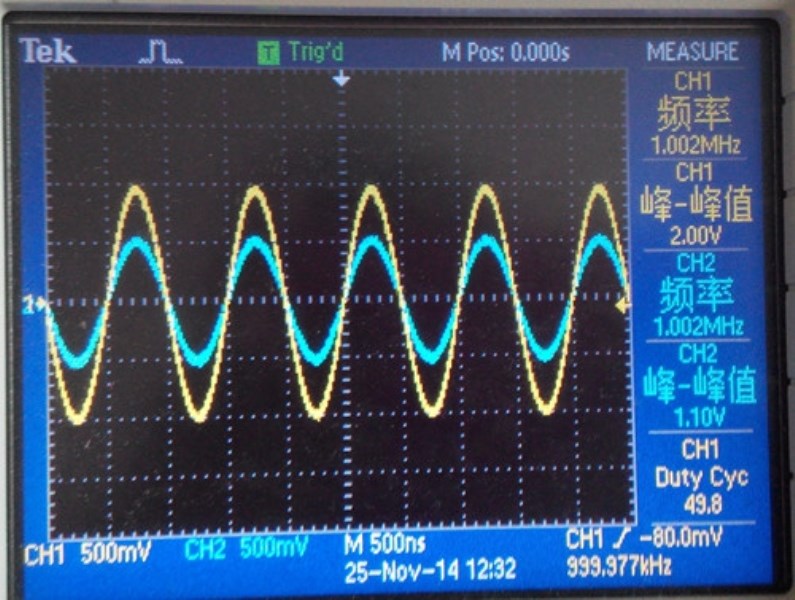Condition:New
Type:Logic ICs
VCA822:AGC automatic gain control module
Module features:
VCA810TI (TIA broadband, with a low offset voltage, continuous variable voltage control gain amplifier, can provide differential input single output, with excellent common mode rejection ratio, and the most prominent advantage is thatVCA810Can achieve-40dB~40dBLinear gain control, gain control accuracy1.5dB,.5Power supply gain control voltage from0VChange to-2VGain from-40dBChange linearly+40dB.VCA810Time gain control, sonar system, voltage tunable active filter, logarithmic amplifier, pulse amplitude compensation, andRSSITheAGCReceiver is widely used;
Two, module features:
1, the use of VCA810 andhigh speedOperational amplifier cascade mode, the operational amplifier can be customized amplification; the default characteristics of the onboard parameters are as follows:-3dBCutoff frequency is approximately34MHz, the gain fluctuation in the passband is very small.1KHz~10MHzThe input signal ripple is not more than1dB, the input and output impedance is50.Non distorted signal input range:.10mV~.0.75VThe maximum amplitude of the output signal is determined by the amplifier,VCA810Chip signal output amplitude range:.5mV~.1.25V.
2, gain control: manual potentiometer adjustment or automaticDAControl, control voltage range-2V~0VThe default linear gain control range on the board:-38dB~40dB; adjust the board on the resistance, gain 80dB range variable.
3, the input and output interface using a professional SMA interface;
4, using the integrity of the circuit design, you can achieve all of the functions of VCA810, such as: the use of positive or negative input, differential input,DC offsetCalibration and so on; because the circuit will be some conflict, so part of the component is not welding; if there is a special request to buy contact us, the number of us by default delivery, but can provide components of their own welding;
5, the use of industrial grade wiring, to provide reliable contact, reduce some unexpected problems; module is not only for learning, but also can be used to really use;
Three, the actual picture:


Four, module application:
1, high frequency amplifier applications;
2, the need to stabilize the output of the application;
Five, module performance parameters:
1, module power supply: +-5V;
2, the specific parameters of reference Datasheet VCA822;
Six, suite:
1, AGC822 module 1;
2, principle diagram (PDF);

